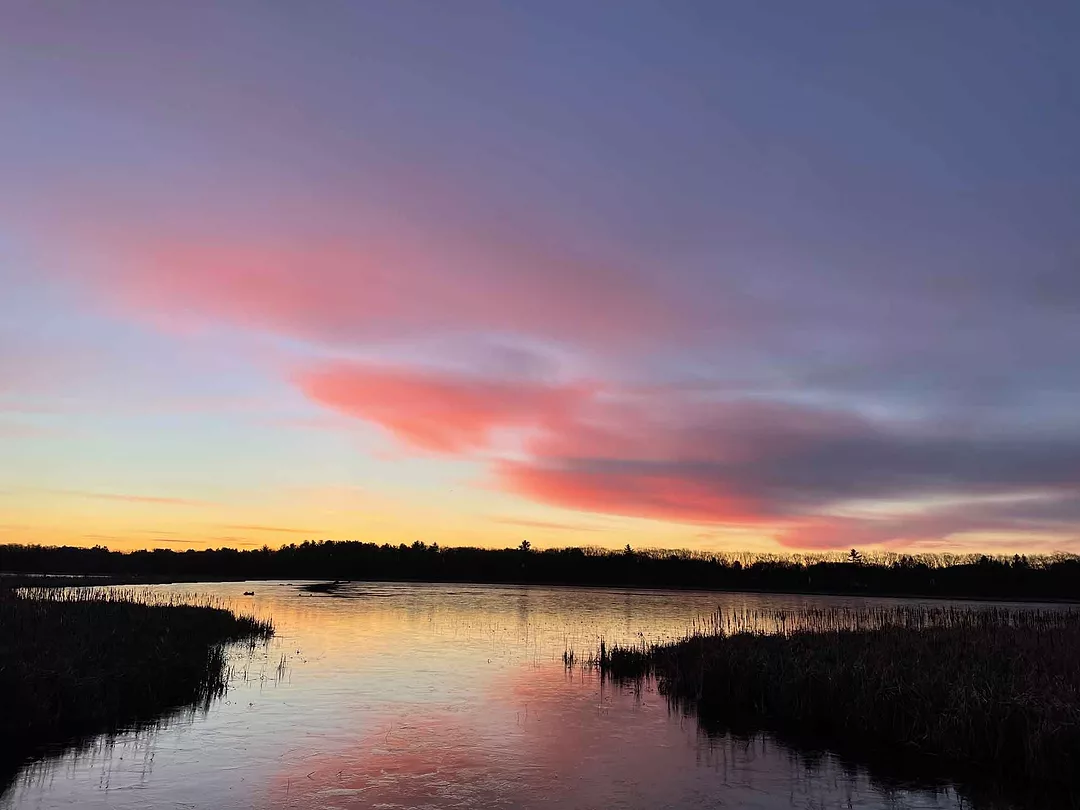Concord has a reputation for being the epicenter of both the American and literary revolutions as well as home to classic authors, philosophers, and artists. But this small town of barely 17,000 residents boasts another wonder - Great Meadows, a world-renowned refuge dedicated to the preservation of native plants, insects, fish, birds, and animals.
Great Meadows National Wildlife Refuge, a 3,800-acre network of lands and waters managed specifically for the protection of wildlife and wildlife habitat, is one of eight wildlife refuges in Eastern Massachusetts that is part of the National Wildlife Refuge System. The U.S. Fish & Wildlife Service, a bureau of the Department of the Interior, manages the property that meanders 12 miles along the Sudbury and Concord Rivers and through six other communities: Billerica, Bedford, Carlisle, Lincoln, Sudbury, and Wayland.

Great blue heron
| ©Don Willette
Great Meadows began in 1944 when the first parcels were donated to the federal government by Samuel Hoar, a Concord native, lawyer, outdoor enthusiast, and naturalist. Mr. Hoar dedicated his time, passion, and money to maintaining the land, waterways, and woods as resting and feeding places for migratory birds. He was quick to purchase abutting parcels of undeveloped properties from private landowners as they came on the market, only to turn around and gift those, too, to the federal government. His generosity and foresight helped create one of the most comprehensive wildlife resource management programs in the world.

Dawn at Great Meadows
| ©Don Willette
Who Calls Great Meadows Home?
More than 220 species, from the chickweed geometer moth to the red-tailed hawk, call Great Meadows home. It is estimated that the careful observer will encounter at least 40 species on a single visit. That number does not include the invasive plants and wildlife that have found their way to Great Meadows. Left untreated, nonnative species will endanger the delicate ecosystem Mr. Hoar strived to create.
Two examples of invasive species are carp and water chestnuts. While guests may enjoy the aerial show carps put on as they jump two feet in the air, the fish is not native to the United States and is among the top 100 invasive species in North America. They make their way to the pools of Great Meadows when the Concord River swells each spring. Carp have no predators and compete in large numbers for the same food sources as native species. Their high mercury content, a byproduct of the Concord River, prevents them from being fileted into meals for the hungry or used as fertilizer.

A Blanding’s turtle, a threatened species, is making a comeback at Great Meadows
| ©Brenda Chia
Water chestnuts blanket the water’s surface and prevent light and oxygen from nurturing the plants needed for the survival of native life. The Division of Fisheries and Wildlife has ongoing programs to reduce, if not eradicate invasive species.
Currently, Great Meadows is a haven for threatened species such as the Blanding’s turtle, whose numbers are dwindling as their freshwater habitats are lost to development and invasive plants.

Red tailed hawk
| ©Don Willette
Visitors From Near and Far
While no daily tallies are taken, tens of thousands of visitors are drawn to the refuge each year, according to Kelsey R. Mackey of the U.S. Fish & Wildlife Service. Great Meadows, like all refuges in the network, saw increased visitor traffic since COVID-19, Ms. Mackey added. Some travel from other parts of the world, and others merely step outside their backyard.
Some visitors arrive to saunter peacefully the 2.5-mile dirt trail around a fresh-water impoundment. Others to photograph a red-winged blackbird perched on a cattail. Some prefer to simply sit on a bench and watch a muskrat bob along the surface, its nearby dome-shaped lodge made from marsh plants.
Spring showers may limit human activity temporarily, as increased water levels routinely submerge the trails. The flooding recedes within weeks, creating vernal pools or ephemeral rain-filled “ponds.” Vernal pools are critical to native amphibians and invertebrates. Fish cannot survive in vernal pools, and therefore cannot harm eggs laid there. The pools dry up by summer as the newest generation of amphibians and invertebrates make their way into the world.

A regal swan glides across the water
| ©Brenda Chia
Great Meadows is open every day, including major holidays, from sunrise to sunset. Public access to Concord’s portion, which features two fresh-water marsh-like impoundments and a path to the Concord River, is tucked unassumingly between two single-family homes on Monsen Road, a cul-de-sac off Route 62 near the Bedford line.
Take all the photographs you like, but please do not take anything else from the reserve. Gathering samples of plants and wildlife is off-limits as this is disruptive to conservation efforts and violators may be fined.
Service animals are allowed and much of the reserve is compliant with the Americans with Disabilities Act. Dog walking is prohibited, as is jogging, cycling, and horseback riding. Visit the Great Meadows website for more information. fws.gov/refuge/great_meadows

